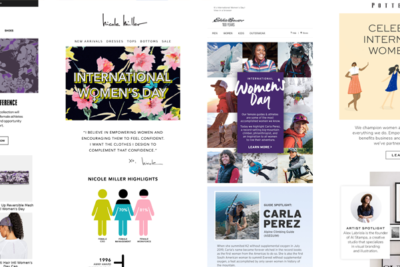To measure how much consumers want to move beyond their pandemic lifestyle changes, just look at their food and dining behavior:
- People have flocked back to indoor dining, although more would still rather eat out on a restaurant patio: Morning Consult’s weekly “Return to Normal” index of consumer behavior shows 76 percent of consumers, especially younger diners, are comfortable with dining inside a restaurant, although outdoor dining still rates a higher comfort level (80 percent).
- Meal kit sales growth is projected to taper off: When the pandemic made grocery shopping problematic, subscription brands like Blue Apron and HelloFresh saw sales and subscribers expand. Although Coresight predicts total annual sales will hit $12 billion by 2024, the pace of growth will be far below the sales increase from 2019 to 2020.
- Food delivery services pivot to groceries: With the online grocery market poised for growth, restaurant-delivery brands like DoorDash and Uber Eats are angling to get in on the action. Meanwhile, restaurant chains are bringing on their own delivery fleets to combat delivery-service fees and surcharges, and to control the diner experience.
Given all these changes, we investigated how brands in MailCharts’ Food and Drink categories use email to drive sales, retain customer confidence, and sell their new offerings.
Here are three insights that reveal opportunities for brands to spread their messages to audiences who have already opted in to stay in touch.
1. Restaurant brands cut back on promos
The 27 brands in MailCharts’ Restaurants/Casual Dining industry group are holding the line on frequency, sending an average of two campaigns weekly. Fewer campaigns include promotions now—an average 24.6 percent of campaigns offered a discount or other incentive. That’s 16.7 percent less than 2021.
In contrast, all Food & Drink industry brands send an average of 2.8 campaigns weekly with 42.9 percent of emails including promos.

2. Email delivers cross-channel promos
Many restaurant/dining brands use email to promote free delivery campaigns that require app downloads and activations. One example: The Habit Burger Grill uses free delivery to persuade diners to download and order through its branded app.
This shows how delivery-dependent brands can use email to solve a perennial problem with mobile apps—persuading users to install and activate the app, not just download it.

3. Delivery brands stress value in shifting markets
DoorDash’s campaign for its DashMart grocery delivery service highlights its time and cost savings in campaigns like this one, with the subject line “Can grocery shopping be delightful?”

Want more info? We have in-depth data, trends, and email examples on dozens of industry groups.
See the complete list and join MailCharts for free to get started!



